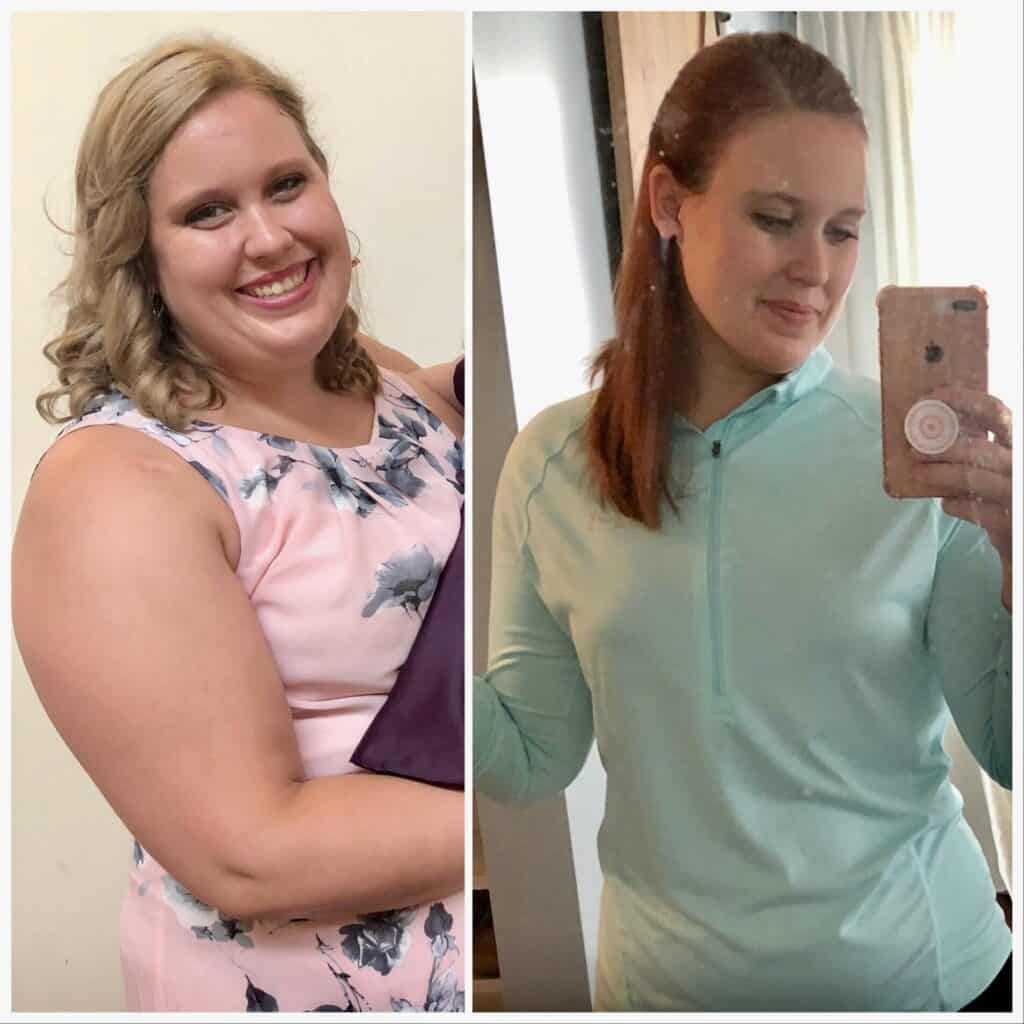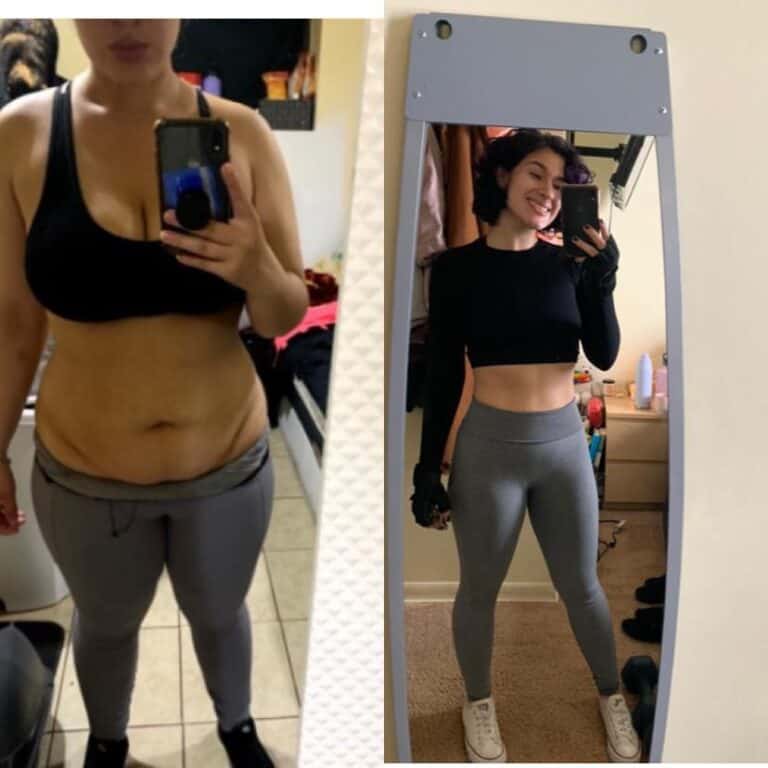How to Lose Weight Without Dieting 10 Proven Methods!
Losing weight can be a daunting task, especially if you are not a fan of dieting. The good news is that there are other ways to shed those extra pounds without having to restrict your food intake.
In this article, we will explore 10 proven methods on how to lose weight without dieting.
Becky’s Incredible Weight Loss Success Story: How She Lost 53 Pounds Without Dieting
Becky had struggled with her weight for years, trying every diet and weight loss program on the market with no success. She felt discouraged and defeated, thinking that she would never be able to achieve her weight loss goals. That was until she met Dr. Nancie and Dr. Alphonso.
Together, they worked to create a customized weight loss plan for Becky that focused on making small lifestyle changes rather than following a strict diet. They helped her understand that weight loss wasn’t just about the number on the scale but also about improving her overall health and well-being.
Dr. Nancie and Dr. Alphonso taught Becky about the importance of drinking water, getting enough sleep, and reducing her sugar intake. They also encouraged her to incorporate more protein into her diet and to exercise regularly.
At first, Becky was hesitant, thinking that she needed to follow a strict diet to lose weight. But as she started to make these small lifestyle changes, she began to see results. She felt more energized, her cravings decreased, and the weight started to come off.
Over the course of several months, Becky lost an incredible 53 pounds without dieting. She couldn’t believe it, and neither could her friends and family. They were amazed at her transformation and how much happier and healthier she looked.

Becky’s success story is a testament to the power of making small lifestyle changes and working with healthcare professionals who understand the importance of a holistic approach to weight loss. Thanks to the guidance and support of Dr. Nancie and Dr. Alphonso, Becky was able to achieve her weight loss goals and improve her overall health and well-being.
Method 1: Drink More Water
Drinking more water is a simple yet effective way to aid in weight loss. When we drink water, it helps to increase our metabolism, which in turn helps to burn more calories throughout the day. This increase in metabolism can last for up to an hour after drinking water, making it a powerful tool for weight loss.
In addition to boosting metabolism, drinking water can also help to reduce our appetite. Often, when we feel hungry, we are actually just thirsty. By drinking water throughout the day, we can help to stave off hunger pangs and reduce our overall calorie intake.
It’s recommended that we drink at least 8 glasses of water per day, which equates to roughly 64 ounces or 2 liters. However, the amount of water you need to drink can vary based on your individual needs, activity level, and climate.
One way to ensure that you are getting enough water is to carry a reusable water bottle with you throughout the day. This makes it easy to track your water intake and ensures that you always have water on hand when you need it.
Replacing sugary drinks with water is also a great way to cut down on your calorie intake. Sugary drinks, like soda and juice, are often high in calories and offer little nutritional value. By swapping these drinks for water, you can significantly reduce your daily calorie intake and help to support weight loss.
Method 2: Get Enough Sleep
Getting enough sleep is crucial for overall health and well-being, and it can also play a role in weight loss. When we don’t get enough sleep, it can disrupt our hormones, leading to an increase in appetite and a decrease in metabolism.
Studies have shown that people who get less than 7 hours of sleep per night are more likely to be overweight or obese. Lack of sleep can increase the levels of the hormone ghrelin, which stimulates hunger, while decreasing levels of the hormone leptin, which helps to regulate appetite.
In addition to increasing hunger, lack of sleep can also lead to cravings for high-calorie, unhealthy foods. This can be attributed to the fact that when we are tired, our bodies look for quick sources of energy, which are often found in sugary or fatty foods.
To ensure that you are getting enough sleep, aim for at least 7-8 hours of sleep per night. Establishing a consistent sleep schedule, avoiding caffeine and alcohol before bedtime, and creating a relaxing bedtime routine can all help to improve sleep quality.
Getting enough sleep not only helps to regulate hormones and reduce cravings, but it also gives our bodies time to rest and recover. By prioritizing sleep, we can improve our overall health and support our weight loss goals.
Method 3: Cut Down on Sugar
Sugar is one of the most commonly consumed substances in the modern diet, and unfortunately, it is also one of the leading contributors to weight gain. This is because sugar is high in calories and contains no essential nutrients, meaning that it is essentially empty calories.
Consuming excess sugar leads to a rapid spike in blood sugar levels, which is often followed by a crash in energy levels. This energy crash can lead to increased cravings for more sugary foods, creating a vicious cycle that can lead to weight gain.
Additionally, high sugar intake has been linked to an increased risk of obesity, type 2 diabetes, and other chronic diseases. Therefore, cutting down on sugar is a crucial step in achieving and maintaining a healthy weight.
To cut down on sugar, it is important to read food labels and be mindful of added sugars in packaged foods. Many foods, including savory items like bread and pasta sauce, can contain hidden sugars that can quickly add up. It’s important to focus on whole, unprocessed foods, which are naturally low in sugar.
Another way to cut down on sugar is to replace sugary drinks, like soda and fruit juice, with water or unsweetened beverages. These drinks are often high in calories and sugar, making them a major contributor to weight gain.
Method 4: Increase Your Protein Intake
Protein is an essential nutrient that plays a vital role in building and repairing muscle tissue. In addition to its muscle-building properties, protein can also help you feel full for longer periods of time, making it a valuable tool for weight loss.
When we consume protein, it is broken down into amino acids, which our bodies use to build and repair muscle tissue. This muscle tissue requires more energy to maintain than fat tissue, which means that increasing muscle mass can help to boost metabolism and burn more calories.
In addition to its metabolic benefits, protein can also help to reduce appetite and cravings. This is because protein takes longer to digest than carbohydrates or fats, leading to a feeling of fullness that can last for several hours. This can help to reduce overall calorie intake and support weight loss goals.
To increase your protein intake, focus on incorporating lean sources of protein into your meals, such as chicken, fish, tofu, beans, and lentils. You can also add protein powder to smoothies or snacks to boost your protein intake.
It’s important to note that while increasing protein intake can be beneficial for weight loss, it should be done in moderation. Consuming too much protein can put a strain on the kidneys and liver, and may also lead to weight gain if it causes an overall increase in calorie intake.
Method 5: Exercise Regularly
Regular exercise is a key component of any successful weight loss plan. Exercise helps to burn calories and increase metabolism, making it a powerful tool for achieving and maintaining a healthy weight.
When we exercise, we burn calories, which helps to create a calorie deficit and promote weight loss. In addition to burning calories during exercise, regular exercise also helps to increase metabolism, allowing our bodies to burn more calories throughout the day, even when we are not exercising.
Exercise can also help to build muscle mass, which is more metabolically active than fat tissue. This means that increasing muscle mass through exercise can help to boost metabolism and burn more calories.
Aim to exercise for at least 30 minutes a day, 5 days a week. This can include a combination of cardio exercises, like running or biking, and strength training exercises, like weightlifting or bodyweight exercises.
It’s important to find an exercise routine that you enjoy and that fits into your lifestyle. This can help to make exercise feel less like a chore and more like a fun and enjoyable part of your daily routine.
Remember, exercise is just one component of a successful weight loss plan. It’s important to also focus on making healthy dietary choices and getting enough sleep to support your weight loss goals.
Method 6: Practice Mindful Eating
Mindful eating is a powerful tool for weight loss and overall health. This approach involves being present and fully engaged while eating, allowing you to pay attention to your body’s hunger and fullness signals and reduce your tendency to overeat.
When we eat mindfully, we focus on the experience of eating, paying attention to the taste, texture, and aroma of our food. We also take time to chew our food thoroughly, allowing our bodies to fully digest and absorb nutrients from our meals.
Practicing mindful eating can help to reduce overeating and improve our overall relationship with food. By being present and engaged while eating, we can better tune in to our body’s hunger and fullness signals, allowing us to stop eating when we are satisfied rather than when we are uncomfortably full.
To practice mindful eating, try to eliminate distractions while eating, such as television or phones. Instead, focus on the experience of eating and pay attention to the taste, texture, and aroma of your food. Take time to chew your food thoroughly and be mindful of when you start to feel full.
It’s also important to listen to your body’s hunger signals and eat when you are hungry rather than based on external cues, such as the time of day or social pressure.
Method 7: Use Smaller Plates
Using smaller plates is a simple yet effective way to support weight loss goals. By using smaller plates, we can trick our brains into thinking that we are eating more, which can help to reduce overall calorie intake without feeling hungry.
Studies have shown that people tend to eat more when presented with larger portions, regardless of whether they are actually hungry or not. By using smaller plates, we can reduce the portion sizes of our meals, making it easier to achieve a calorie deficit and support weight loss goals.
In addition to reducing portion sizes, using smaller plates can also help to create a feeling of satisfaction and fullness. This is because our brains are wired to associate the amount of food on our plates with our level of satiety. When we use smaller plates, our brains perceive that we are eating a larger portion than we actually are, leading to a feeling of fullness and satisfaction.
To implement this method, try switching out your regular dinner plates for smaller ones. You can also use smaller bowls and cups for snacks and beverages. This can help you to naturally reduce your portion sizes and support your weight loss goals without feeling deprived or hungry.
Method 8: Avoid Eating Late at Night
Avoiding eating late at night is an important step in achieving and maintaining a healthy weight. Eating late at night can disrupt our sleep, leading to an increase in hunger hormones and a decrease in metabolism.
When we eat late at night, our bodies are more likely to store the calories as fat rather than burning them for energy. This is because our metabolism slows down as we prepare for sleep, making it more difficult to burn off excess calories.
In addition to its impact on metabolism, eating late at night can also lead to poor sleep quality. When we eat late at night, our bodies are working to digest the food, which can disrupt our natural sleep rhythms and lead to restless sleep.
To avoid eating late at night, try to finish your last meal at least 2-3 hours before bedtime. This can help to regulate your metabolism and reduce cravings, allowing for a more restful night’s sleep.
If you do find yourself hungry late at night, try reaching for a healthy snack, like a piece of fruit or a small serving of nuts. Avoid sugary or high-fat snacks, as these can disrupt sleep and contribute to weight gain.
Method 9: Manage Your Stress Levels
Stress is a common and often unavoidable part of modern life, but it can have negative effects on our health and well-being, including weight gain. When we are stressed, our bodies produce cortisol, a hormone that stimulates appetite and promotes the storage of fat.
The link between stress and weight gain is complex, but there are several ways in which stress can contribute to weight gain. For example, stress can lead to overeating or binge eating as a way to cope with negative emotions. It can also disrupt sleep, leading to hormonal imbalances that contribute to weight gain.
Managing stress levels is an important step in achieving and maintaining a healthy weight. There are several activities that can help to reduce stress and prevent weight gain, including yoga, meditation, deep breathing, and mindfulness practices.
Yoga and meditation are effective stress-reducing activities that can also improve flexibility and strength. Deep breathing exercises can help to reduce stress and promote relaxation by slowing down our heart rate and breathing.
Practicing mindfulness, or being fully present and engaged in the moment, can also help to reduce stress and prevent weight gain. Mindfulness can be practiced in a variety of ways, including through meditation, yoga, and other activities that promote relaxation and focus.
In addition to these activities, it’s important to prioritize self-care and seek support when needed. This can include taking breaks when feeling overwhelmed, seeking counseling or therapy, and maintaining social connections with friends and family.
Method 10: Find a Support System
Finding a support system is an essential component of any successful weight loss plan. A support system can help you stay motivated, accountable, and on track with your goals.
There are many ways to find a support system, including joining a support group, working with a personal trainer, or enlisting the help of a friend or family member. A support group can provide a safe and supportive environment where you can share your experiences, learn from others, and receive encouragement and feedback.
Working with a personal trainer or fitness coach can also be a valuable source of support. These professionals can help you set realistic goals, create a personalized workout plan, and provide ongoing support and motivation.
Enlisting the help of a friend or family member can also be a powerful source of support. Having someone to share your successes and challenges with can help you stay accountable and motivated, and can provide a valuable source of encouragement and support.
In addition to providing motivation and accountability, a support system can also help you stay on track with healthy habits, such as healthy eating and regular exercise. They can also provide a valuable source of feedback and advice, helping you to navigate challenges and overcome obstacles.
Start Your Weight Loss Journey Today
Losing weight without dieting is possible by making small lifestyle changes that can have a big impact on your overall health. By following these 10 proven methods, you can shed those extra pounds and achieve your weight loss goals.
FAQs
Q1. Can I still lose weight if I don’t exercise regularly? A1. Yes, you can still lose weight by following the other methods mentioned in this article. However, regular exercise is essential for long-term weight loss and overall health.
Q2. How much water should I drink a day to lose weight? A2. Aim to drink at least 8 glasses of water a day to help you lose weight.
Q3. Can I still eat my favorite foods while trying to lose weight? A3. Yes, you can still enjoy your favorite foods in moderation while trying to lose weight. It’s all about balance and making healthier choices.
What To Do Next…
For people who want to stop struggling with their weight

We Now Have FDA Approved Semaglutide Weight Loss in Sarasota and Bradenton Florida. Book a free consultation and find out about the semaglutide cost and semaglutide side effects. Semaglutide injection are available after your free consultation.






